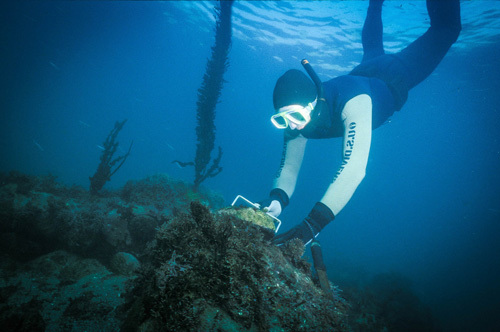Long Range Fish Report
From Sportfishing
From Sportfishing
Fish Report for 2-25-2016

Are Abalone Report Cards Used to Set New Quotas?
2-25-2016
Carrie Wilson
Question: I was just filing my abalone harvest report, which rather than being due the end of January like before, is now not due until April 1. While I appreciate the extra time and opportunity to still fill out my report when I go to buy new tags for the season opener, I am wondering if this means my harvest data from last year is not being used to set quotas and limits for the following season. Specifically, is the impact of the Fort Ross closure and potential rebound or the north/south split of the last few years not being accounted for? (Darren M., Folsom)
Answer: I’m afraid you are mistaken about the deadline changing. Abalone report cards are still due Jan. 31. Beginning this year our online reporting system will accept late reports because they still contain valuable information even after the Jan. 31 deadline. In the future, late reporting may result in a mandatory late fee or temporary suspension of the privilege to harvest abalone.
According to California Department of Fish and Wildlife (CDFW) Marine Environmental Scientist Jerry Kashiwada, data from all cards returned to the Fort Bragg office are now being entered and it takes additional time beyond the deadline for that to be completed. These data are very valuable in helping us determine the effects of the current set of regulations but it will take several years to sort out the regulation effects from year to year variations. We had already been noting shifts in fishing effort to Mendocino County before the Fort Ross closure and catch reduction in Sonoma and Marin counties.
Our current management of abalone does not change from year to year in response to report card data. Instead, it is based on the density of abalone monitored by dive surveys at eight index sites. But the card data does provide valuable indications of abalone status at the many sites not covered by index site surveys. The card data helps us determine the effects of the latest regulations, while the surveys show the effects on abalone populations and will largely determine future regulatory changes.
We are currently working on a new abalone management plan and will have public meetings in the near future to discuss details of the plan. For more information, please go to http://www.wildlife.ca.gov/conservation/marine/red-abalone-fmp.
Answer: I’m afraid you are mistaken about the deadline changing. Abalone report cards are still due Jan. 31. Beginning this year our online reporting system will accept late reports because they still contain valuable information even after the Jan. 31 deadline. In the future, late reporting may result in a mandatory late fee or temporary suspension of the privilege to harvest abalone.
According to California Department of Fish and Wildlife (CDFW) Marine Environmental Scientist Jerry Kashiwada, data from all cards returned to the Fort Bragg office are now being entered and it takes additional time beyond the deadline for that to be completed. These data are very valuable in helping us determine the effects of the current set of regulations but it will take several years to sort out the regulation effects from year to year variations. We had already been noting shifts in fishing effort to Mendocino County before the Fort Ross closure and catch reduction in Sonoma and Marin counties.
Our current management of abalone does not change from year to year in response to report card data. Instead, it is based on the density of abalone monitored by dive surveys at eight index sites. But the card data does provide valuable indications of abalone status at the many sites not covered by index site surveys. The card data helps us determine the effects of the latest regulations, while the surveys show the effects on abalone populations and will largely determine future regulatory changes.
We are currently working on a new abalone management plan and will have public meetings in the near future to discuss details of the plan. For more information, please go to http://www.wildlife.ca.gov/conservation/marine/red-abalone-fmp.
Carrie Wilson is a marine environmental scientist with the California Department of Fish and Wildlife. While she cannot personally answer everyone’s questions, she will select a few to answer each week in this column. Please contact her at CalOutdoors@wildlife.ca.gov.
< Previous Report Next Report >
More Reports
California Department of Fish & Wildlife Reports
for Thursday, February 25th, 2016• Shark fin prohibition
• Hunting on rental property

2-24-2016
The California Department of Fish and Wildlife has the following trout plant schedule for the week of February 21, 2016. Inyo...... Read More

LongRangeSportfishing.net © 2025. All Rights Reserved.
Website Hosting and Design provided by TECK.net
Website Hosting and Design provided by TECK.net